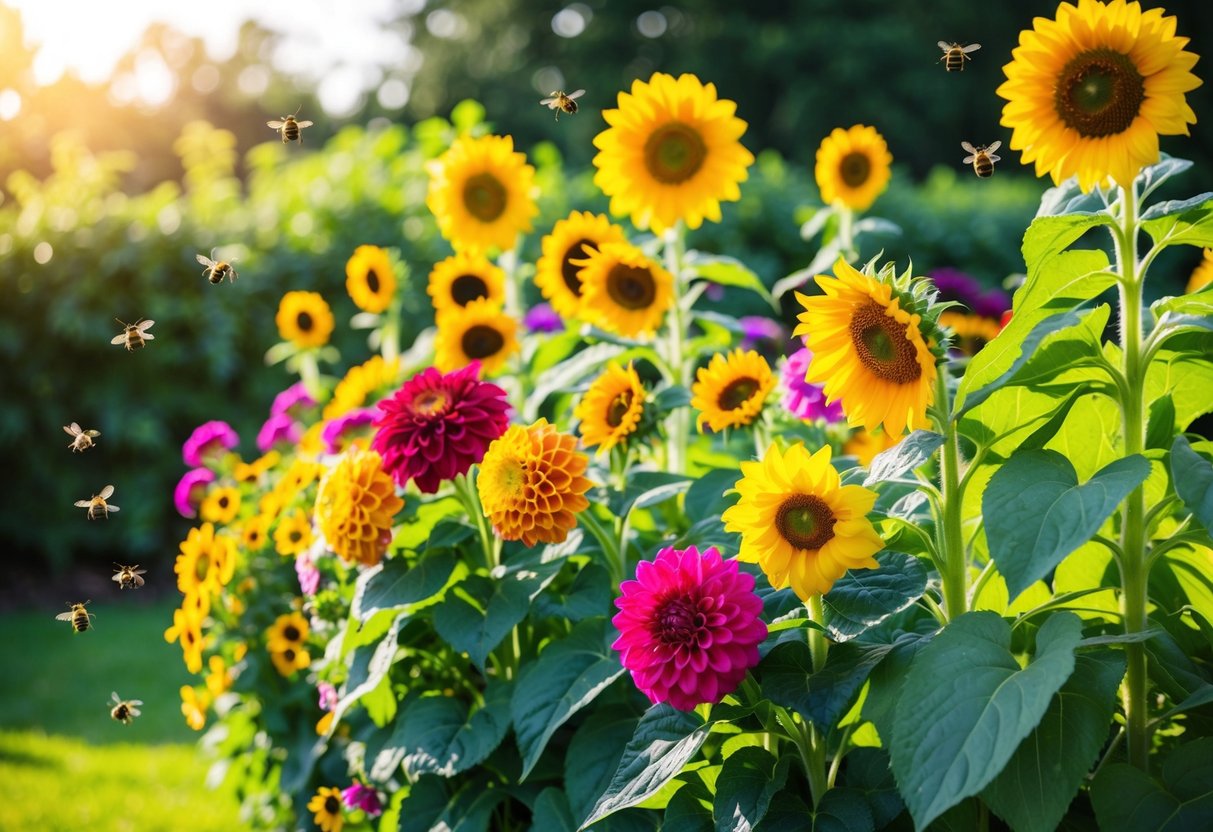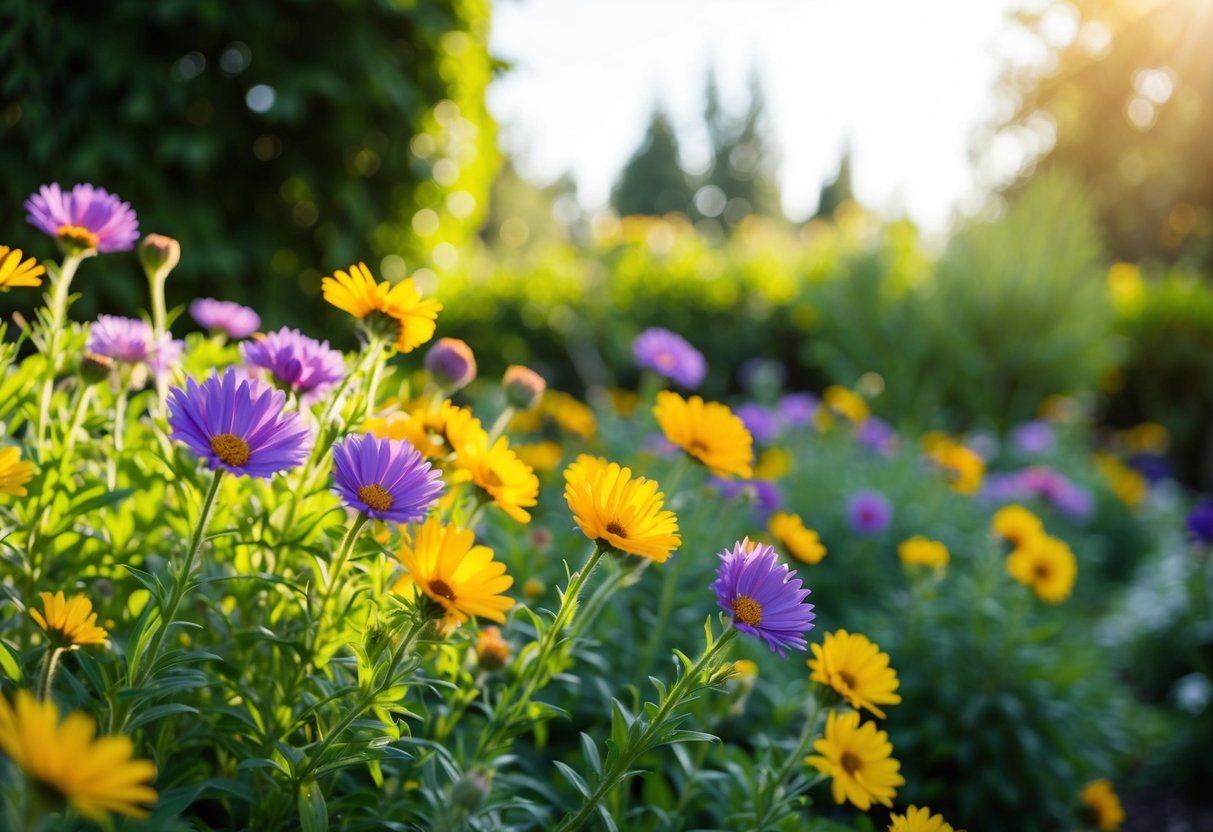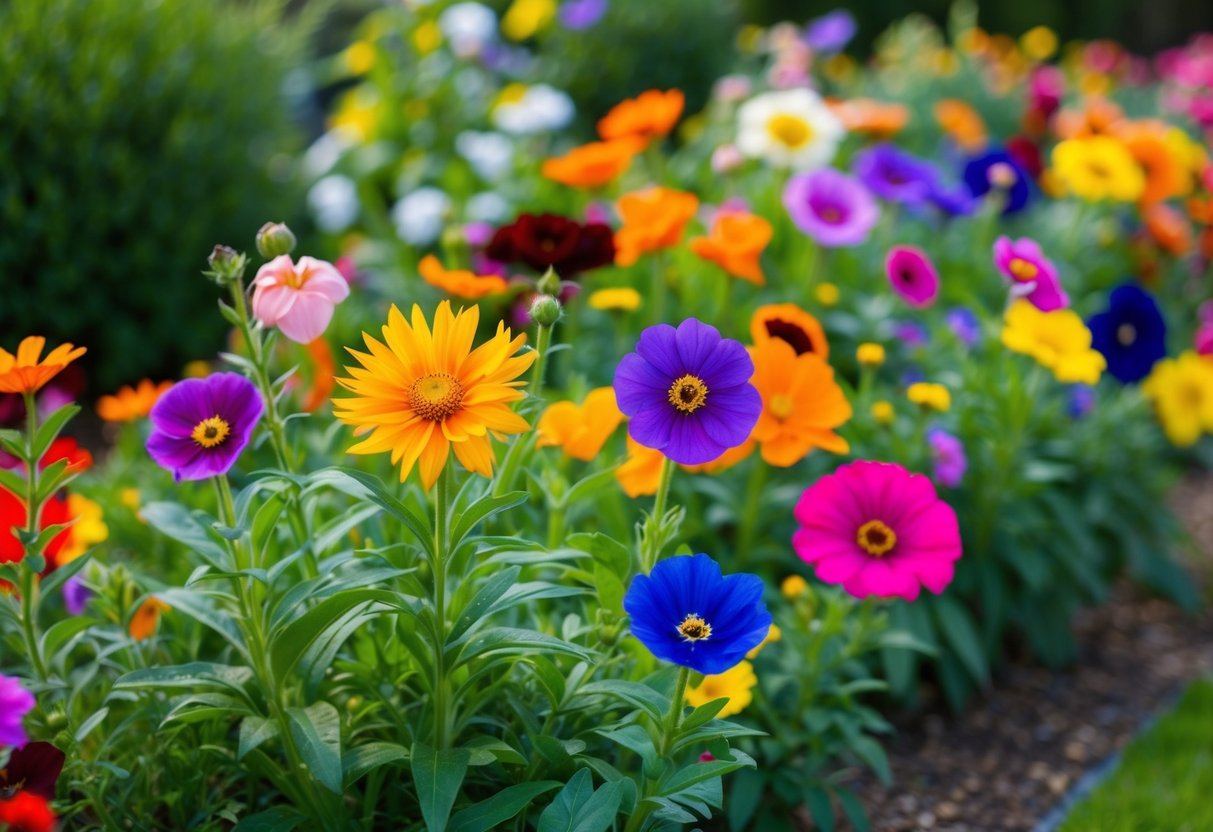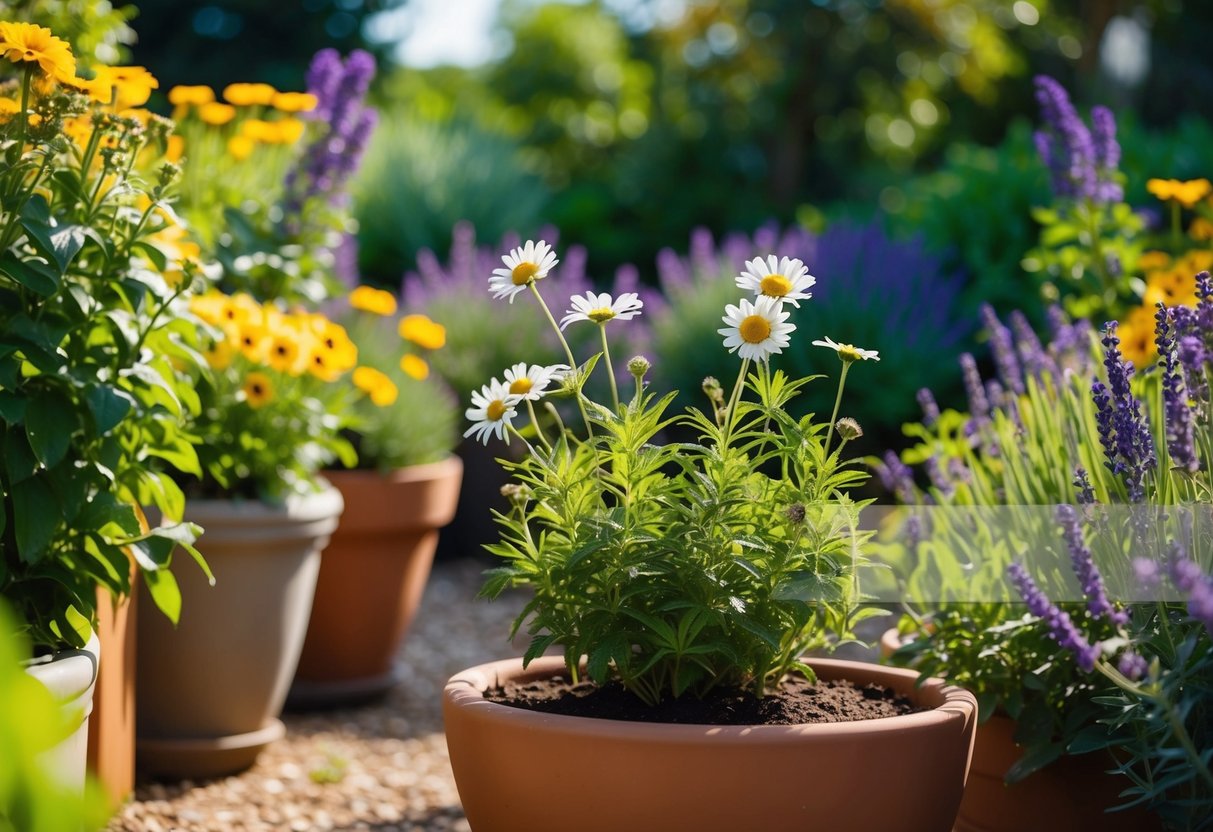What Flowers Last the Longest Outside: Top Choices for Your Garden
When planning your garden, picking flowers that can stand the test of time is key. Whether you’re looking for beautiful blooms or hardy perennials, knowing which ones will last the longest can make all the difference.
Perennial flowers like Black Eyed Susans are excellent choices because they can thrive with ample sunlight and well-draining soil.

For a vibrant garden, consider flowers such as calibrachoa, which is perfect for hanging baskets. There’s the added benefit of not needing to deadhead them, keeping maintenance low.
To achieve long-lasting beauty in your yard, exploring options like Orchids and Salvia can also be wise choices.
Combining different types of flowers can create a vivid and enduring garden space. Each type of flower brings a unique splash of color and texture, making your outdoor area a delight to visit.
Types of Long-Lasting Flowers

When you’re looking for flowers that thrive outdoors and keep their beauty for extended periods, consider a mix of perennials, annuals, and bulbs. Each type offers unique qualities, ensuring colorful blooms throughout the seasons.
Popular Perennials for Outdoor Gardens
Perennials are plants that return year after year, making them favorites for gardeners. Lavender stands out with its soothing scent and purple spikes. It’s not only beautiful but attracts pollinators like bees.
Peonies offer lush and fragrant blooms, perfect for adding elegance to your garden. Consider coneflowers for their vibrant colors and resilience, as they thrive in various climates.
Coreopsis and gaillardia are known for their long flowering period, bringing continuous color. These flowers are relatively low-maintenance and can tolerate different weather conditions, making them ideal for gardeners seeking lasting beauty.
Durable Annuals That Bloom All Season
Annuals bloom for one season but can offer non-stop color. Zinnias are a great choice due to their bright shades and long-lasting flowers. They are easy to grow and perfect for sunny spots.
Cosmos also provide continuous blooms and are known for attracting birds and butterflies to your garden.
Sunflowers are classic annuals with cheerful, large flowers that can brighten any landscape.
Another option is gazania, which is hardy and loves the sun, showcasing daisy-like blooms in various colors. These annuals are easy to care for and can withstand different conditions, ensuring your garden remains vibrant all season long.
Bulb Flowers for Yearly Blooms
Bulb flowers are popular for their ability to surprise you with new growth each year. Tulips are a classic choice, offering a wide range of colors and impressive springtime beauty.
Lilies deliver stunning blooms and a sweet fragrance, often becoming the centerpiece of any garden.
Hyacinths and daffodils are additional bulbs that signal the start of spring with their bright flowers and delightful scent. These bulb flowers require some planning but reward you with their annual display of color, making your garden look fresh each year.
Creating a Cutting Garden

Creating a cutting garden lets you have fresh flowers for bouquets while still enjoying blooms outdoors. Focus on choosing flowers with a long vase life and planning for a garden that blooms throughout the season.
Selecting Flowers for Vase Life
When picking flowers for your cutting garden, look for those known to last a long time in arrangements. Zinnias and black-eyed Susans are popular options because of their vibrant colors and extended vase life.
Celosia also makes a great choice for its heat tolerance and diverse colors.
Selecting flowers high in vase life helps your arrangements stay fresh longer. Some flowers, like zinnias, bloom just 60 days after planting, which means you won’t have to wait long to see results.
Use flower food in your vase water to further extend the time your blooms look beautiful.
Designing a Garden for Continual Bloom
To keep fresh flowers available all season, plan your garden design carefully. Combine plants that bloom at different times.
For instance, you can plant both early and late bloomers to ensure there’s always something flowering.
Consider the space between your plants so they can spread and flourish. Proper spacing lets air circulate, reducing the risk of disease.
Regular cutting encourages new blooms, ensuring your garden remains productive. Consistent pruning also helps maintain healthy plants, allowing for a continuous supply of cut flowers for your arrangements.
Maintaining Flowers for Longevity

To help your flowers thrive, pay attention to watering, fertilization, deadheading, and protection from diseases and pests. These practices ensure that your flowers stay vibrant and healthy outdoors.
Watering and Fertilization
Flowers need the right amount of water to stay fresh. When you water your plants, make sure the soil is consistently moist but not waterlogged.
Roses and lilies appreciate regular watering, especially during dry spells.
Using fertilizers can also promote healthy growth. Choose a balanced fertilizer to give your flowers the nutrients they need.
Sunflowers, for example, thrive with a high-nitrogen fertilizer. Applying it during the growing season boosts their growth and flower production.
Remember to adjust the amount of water based on weather conditions to avoid overwatering.
The Importance of Deadheading
Deadheading is the process of removing spent flowers from plants. It encourages the growth of new blooms and prevents seeds from forming.
This is essential for plants like roses, which continuously produce new flowers when deadheaded regularly.
Use clean shears to cut the faded flowers just above the first set of leaves. By doing so, you help direct the plant’s energy back to producing more flowers rather than seeds.
Deadheading also keeps your garden looking tidy and vibrant. It can help extend the blooming period for many flowers, keeping your garden lively for longer.
Protecting from Diseases and Pests
Flowers are prone to diseases and pests that can hamper their growth. Regular inspection is crucial.
Look for any signs like discolored leaves or holes, which can indicate problems.
To protect roses and lilies, you might consider using organic pest control solutions. Advocating for natural predators, like ladybugs, helps control pests such as aphids.
Diseases like powdery mildew are common. Ensure good air circulation and remove any infected plants immediately. This helps prevent the spread to healthy blooms.
Using preventative sprays designed for specific diseases can also safeguard your flowers from possible threats.
Specific Care Tips for Long-Lasting Varieties

When caring for long-lasting flowers, focus on their unique needs. From hardy perennials to annuals and bulbs, each requires attention to details like watering, sunlight, and soil conditions.
Caring for Hardy Perennials
For perennials like chrysanthemums, yarrow, and stella de oro daylily, choose well-draining soil to prevent root rot.
Water them deeply but less frequently to encourage deep root growth.
Ensure they receive full sun or partial shade, depending on the plant. Prune dead or unhealthy leaves regularly to promote new growth. Adding mulch around plants helps regulate soil moisture and temperature.
You might also consider fertilizing them with a balanced fertilizer in the spring.
Annuals That Keep on Giving
Annuals such as salvia thrive in bright sunlight and require consistent moisture. Ensure the soil is well-draining, and water them regularly, avoiding overhead watering to prevent disease.
Deadheading, or removing spent blooms, encourages more flowers. This is great for capturing the continued beauty of flowers like the torch lily.
You can enhance soil nutrient levels by using a slow-release fertilizer at the beginning of the growing season.
Bulbs and Tubers: Unique Considerations
Bulbs like alliums and lilies including oriental and calla lilies, need rich soil. Planting depth is crucial; ensure they are planted at least two to three times their height.
These thrive in sunny locations but can tolerate some shade. When watering, ensure the soil is moist but not waterlogged to avoid bulb rot.
For tubers such as dahlias, staking is vital to support their tall stems.
Regularly check for pests, as these flowers can be prone to infestations. Fertilize monthly with a balanced fertilizer to support growth and bloom health.
Innovative Arrangement Ideas

Creating a captivating flower arrangement involves choosing the right combination of plants and themes.
By blending perennials with annuals or focusing on long-lasting cut flowers, you can create stunning displays for any garden.
Combining Perennials and Annuals
Mixing perennials and annuals can offer continuous color throughout the growing season. Perennials like delphiniums and chrysanthemums return year after year, providing stable background foliage and blooms.
Annuals such as fuchsia add vibrant, seasonal highlights.
When planning your arrangement, consider bloom times. Both perennials and annuals can be staggered to ensure something is always flowering.
Delphiniums can serve as tall, striking focal points. Meanwhile, fill gaps with clusters of fuchsia to add pops of color and contrast.
Use a layered approach in your flower beds. Place taller plants at the back and shorter ones in front. This allows every plant to have its moment to shine, creating a dynamic visual effect.
Utilizing Long-Lasting Cut Flowers
To maximize the longevity of your floral arrangements, choose cut flowers known for their durability.
Orchids, carnations, and alstroemerias are excellent choices that can last weeks with proper care.
Carnations are highly sought after for their wide range of colors and ability to thrive in various conditions. Orchids add an exotic elegance and can last up to two weeks. Alstroemerias, or Peruvian lilies, offer colorful blooms that keep their beauty for a considerable time.
Arrange these flowers in simple yet elegant vases. This highlights their natural beauty while also providing a touch of sophistication. Change the water regularly and trim stems to keep them fresh longer.
Theme-Based Flower Garden Design
Themed flower gardens bring stories to life by using color, texture, and plant selection. A native garden could include plants like blanket flower, offering blooms that support local wildlife.
If you prefer a tropical theme, consider using a mix of orchids and fuchsia for a lush, vibrant feel. These themes can reflect seasons or cultural motifs, enhancing the space’s aesthetic appeal.
Design pathways or central features with chrysanthemum borders or delphiniums to guide the eye. This structured approach provides a cohesive look, harmonizing the different elements of the garden.







